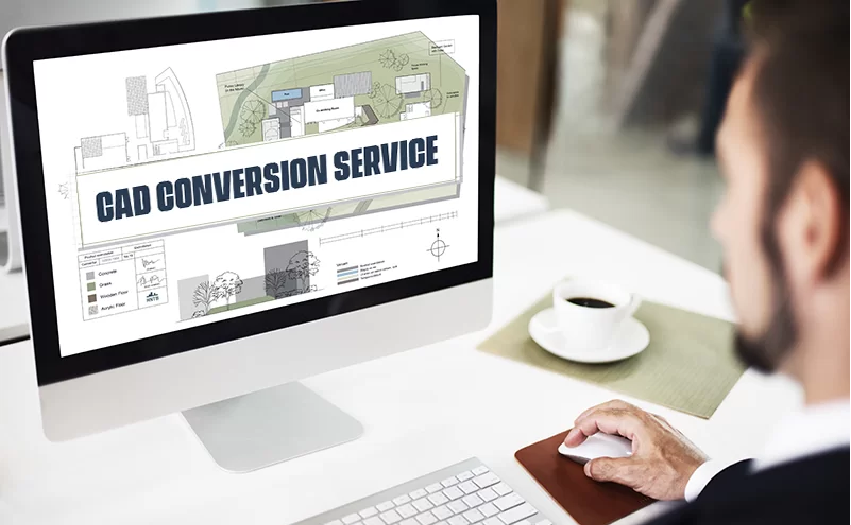The Role of CAD Conversion Services in Digitizing Old Designs

The importance of CAD conversion services in digitizing ancient designs and protecting and enhancing historical and conventional design assets cannot be overstated. In an era of technological advances constantly reshaping design and engineering practices, it’s critical to understand the importance of converting antique designs into new Computer-Aided Design (CAD) services. The significance of this conversion technique is mentioned in this post. It looks into the processes and benefits of CAD conversion services, emphasizing how proper digitization of old drawings may improve accessibility, cooperation, and integration with modern tools.
Understanding CAD Conversion Services
CAD conversion services include a variety of approaches and technologies used to convert non-digital design and drafting forms into current Computer-Aided Design (CAD) formats. These services are critical for bringing ancient designs into the digital arena, allowing for improved access, sharing, and collaboration. Design experts and engineers can benefit from digital workflows by precisely transcribing historical drawings, sketches, or schematics into CAD. Precision and attention to detail are required during this procedure to ensure that the digitized designs correctly resemble their analog counterparts. CAD conversion services provide a smooth transfer from traditional design to the digital age, providing numerous benefits across various industries.
Role of CAD in Digitized Old Designs
Preserving and modernizing ancient designs is critical in many industries, including engineering, construction, manufacturing, and cultural preservation, in an increasingly digitized world.
Preserving Heritage and Knowledge
Historical designs are a treasure store of knowledge and tradition, steeped in cultural, constructional, and engineering value. The possibility of degradation and loss looms over these priceless items as time passes. CAD conversion services emerge as vital tools in safeguarding legacy and information. They bridge the generational divide by painstakingly converting historical blueprints, drawings, and prototypes into modern CAD files. This transition not only protects these designs from degradation but also makes them available to future generations. CAD conversion services serve a critical role in preserving heritage and information for future generations by facilitating this transfer.
Improved Accessibility and Collaboration
Digitized designs, thanks to CAD conversion services, transcend physical limits, increasing accessibility and encouraging collaborative efforts. These transformed CAD files are easily transferable, allowing professionals, scholars, and historians to collaborate seamlessly. They break down geographical barriers, allowing professionals from all around the world to communicate in real time. Furthermore, these digital assets seamlessly interact with modern design tools, increasing productivity and optimizing the design process. CAD conversion services’ greater accessibility and collaboration stimulate innovation, allowing the building of a brighter future on the foundation of the past.
Cost and Time Efficiency
Through their initial investment, CAD conversion services lay the path for long-term cost and time efficiency. While digitization requires resources upfront, it eliminates the need for time-consuming manual methods such as redrawing or reverse engineering. This simplification shortens project durations, lowers labor costs, and reduces project delays. Cost and time reductions are especially noticeable in businesses where precision and speed are critical, making CAD conversion services a wise investment for immediate and long-term savings.
Environmental Benefits
CAD conversion services provide significant environmental benefits and cost and time savings. By converting historical designs to digital formats, the necessity for physical storage and massive paper printing is significantly reduced. This environmentally friendly technique supports sustainability efforts by decreasing paper waste and its environmental impact. Furthermore, the use of digitized designs contributes to greener practices and resource conservation, making CAD conversion services a wise choice for organizations looking to reduce their environmental impact while modernizing their design and engineering processes.
Integration with Modern Technology
Digitization of ancient designs with CAD conversion services preserves historical assets and allows for seamless interaction with new technologies. CAD drafting services excel in this area since they ensure that digitized drawings can be easily integrated into innovative tools and systems. These transformed CAD files are the foundation for sophisticated applications like 3D printing, virtual, and augmented reality. They allow designers and engineers to do advanced simulations and analyses, improving the precision and quality of modern design projects. This fusion of conventional and contemporary technology indicates a promising synergy that will drive innovation and efficiency in various industries.
Conclusion
Finally, CAD conversion services are critical tools for preserving heritage, facilitating cooperation, reducing expenses, and combining old designs with contemporary technology. They connect the past and the present, ensuring that the knowledge and creativity of the past inspire innovation and inform the future. As technology advances, the value of CAD conversion services in digitizing old designs remains critical for industry and society.






